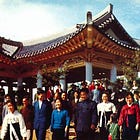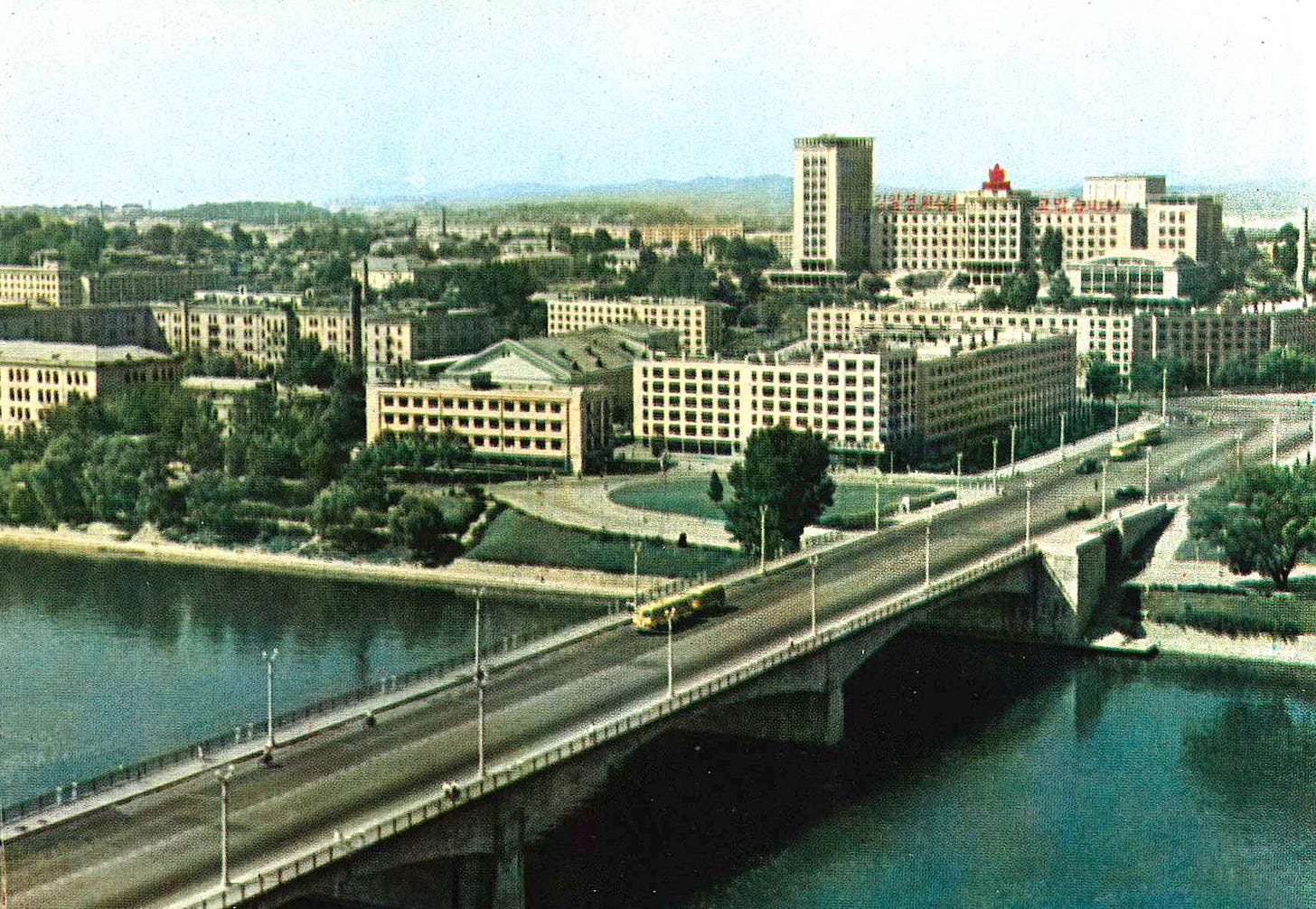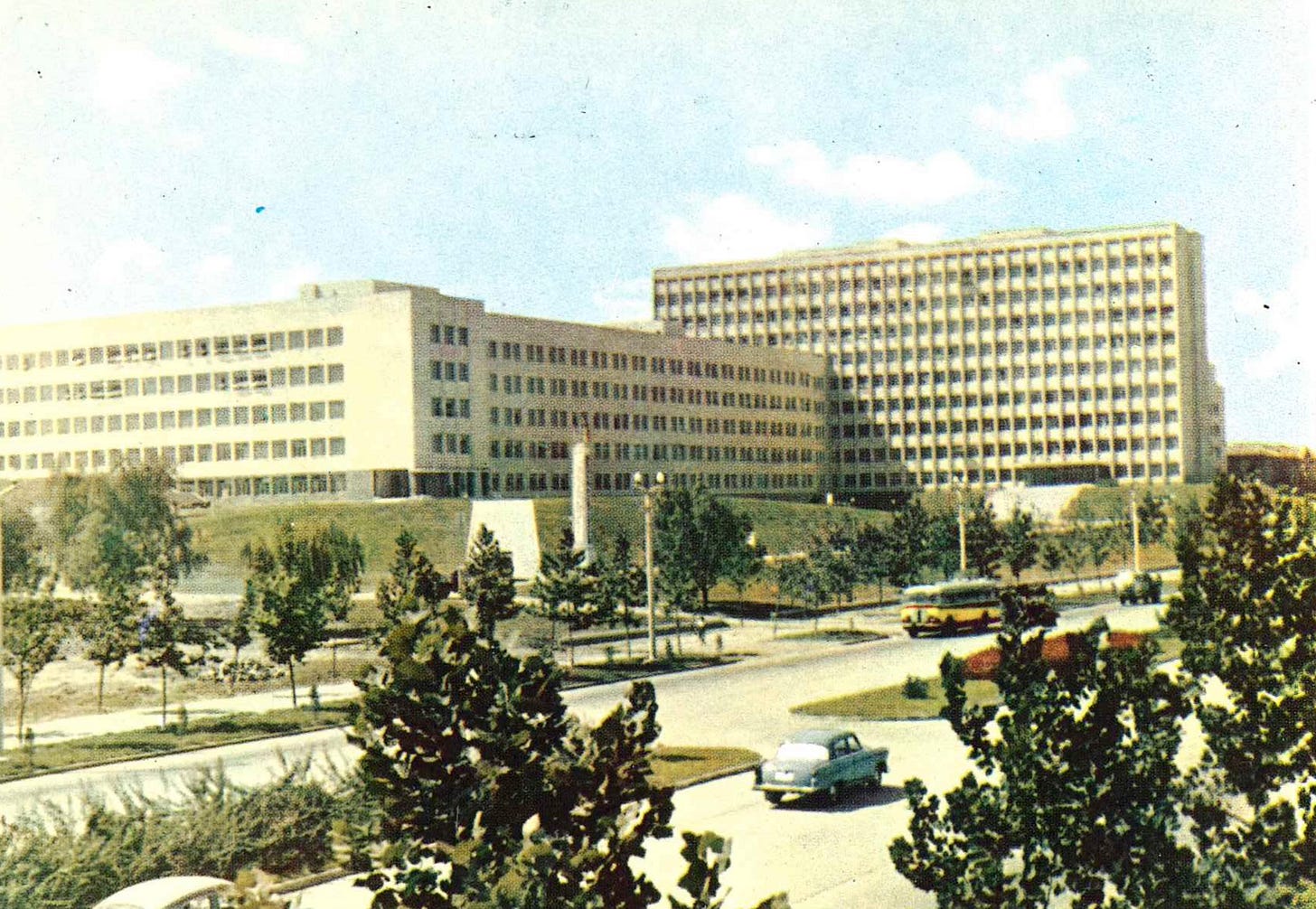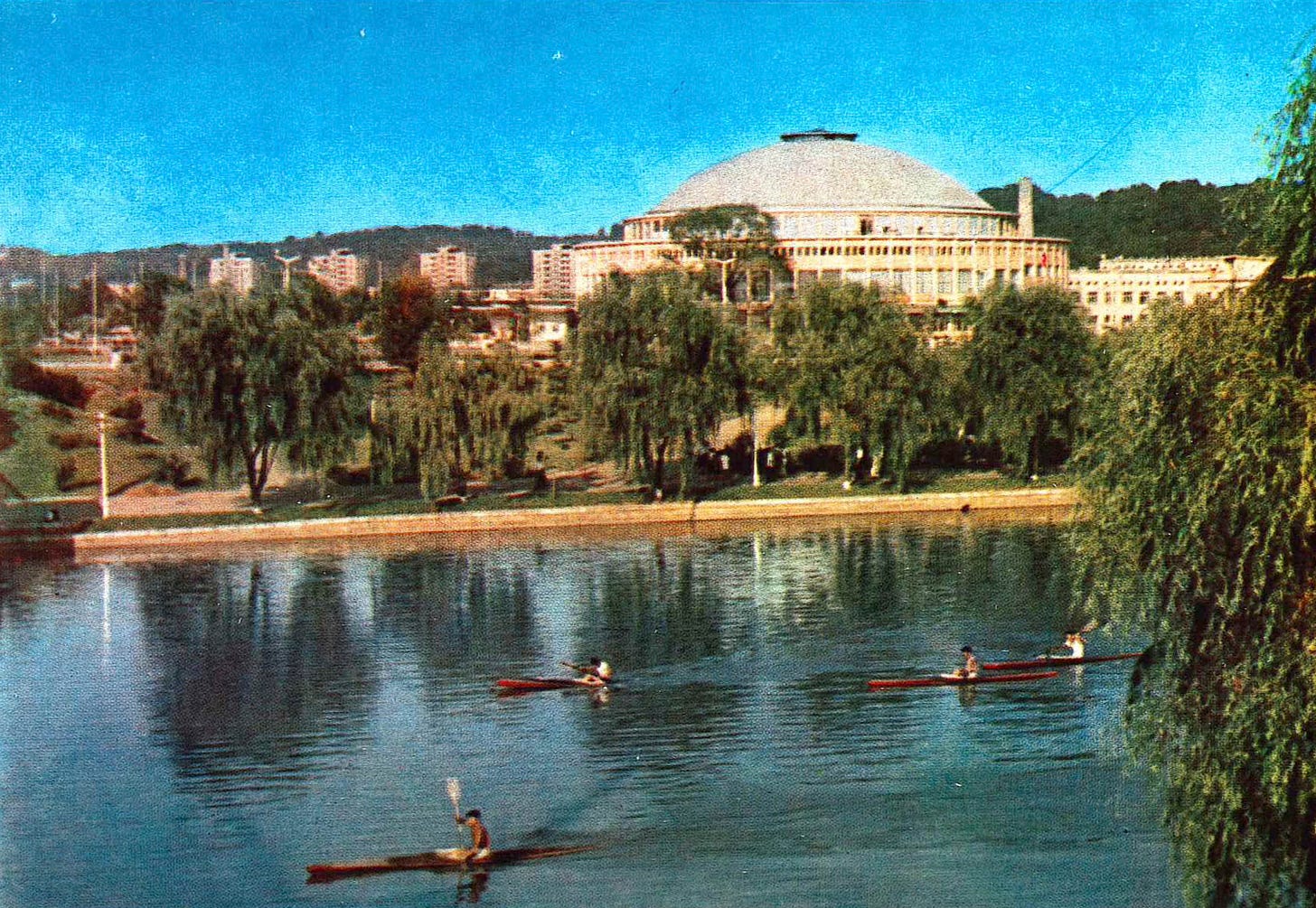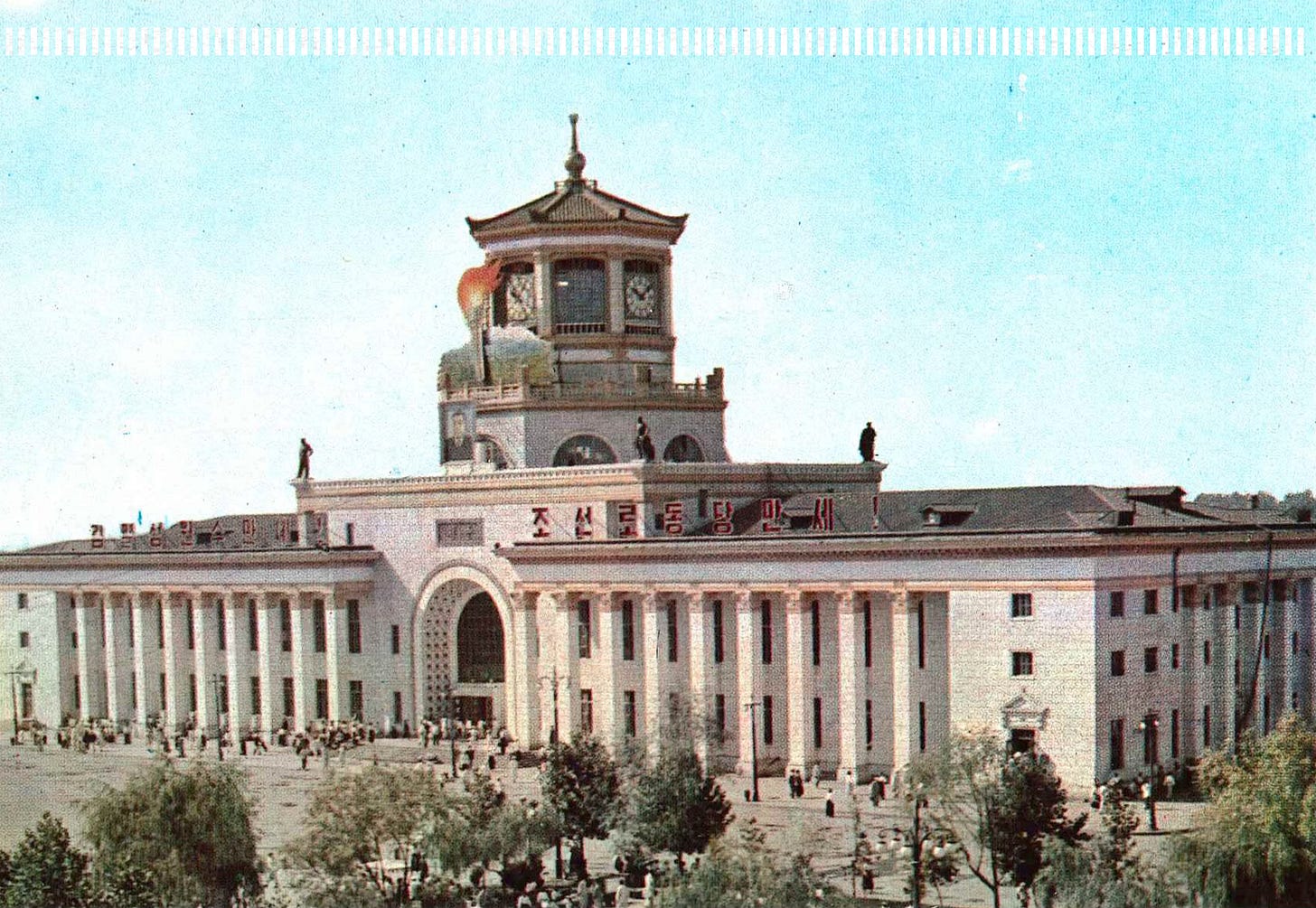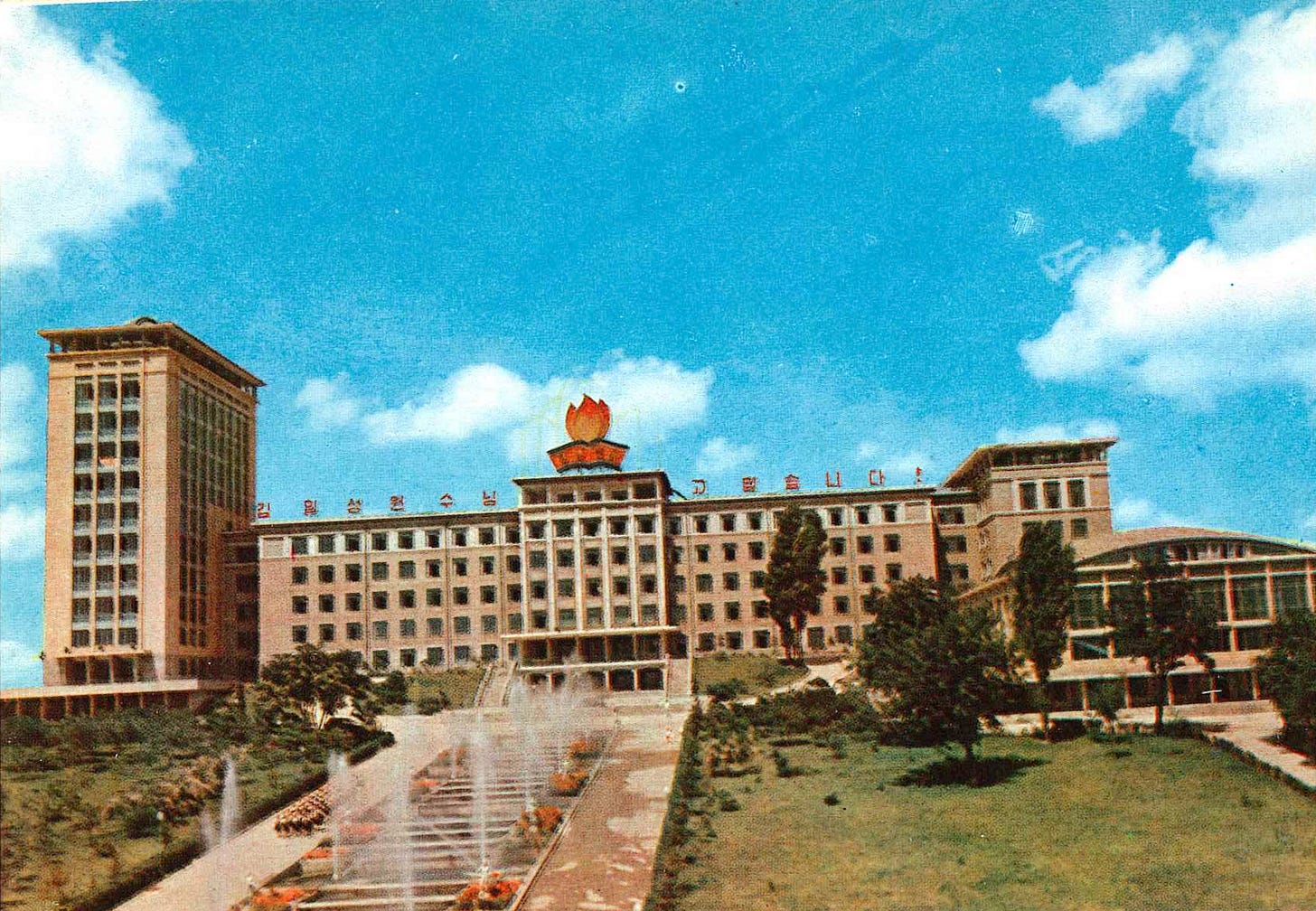Street Views from Pyongyang
As there are so few pictures from the Cold War era, I suppose these make for a quite nice addition to what's otherwise available online
While I have absolutely no qualms about posting “more”—in fact, many, many more—postcards from Central Europe, I thought a bit variety is in order.
Hence, today we’ll travel to Cold War Pyongyang, North Korea (source):
Pyongyang[a] (Korean: 평양; Hancha: 平壤) is the capital and largest city of North Korea, where it is sometimes labeled as the “Capital of the Revolution” (혁명의 수도).[9] Pyongyang is located on the Taedong River about 109 km (68 mi) upstream from its mouth on the Yellow Sea. According to the 2008 population census, it has a population of 3,255,288.[10] Pyongyang is a directly administered city (직할시; 直轄市; chikhalsi) with a status equal to that of the North Korean provinces.
For reasons I have yet to uncover, Erich Sonntag collected a sizeable amount of postcards from North Korea, and my best estimate is that this is due to his contacts across the Iron Curtain; that at least explains the rather sizeable share of postcards from the former German Democratic Republic and various other “Easter bloc” countries. Perhaps this is also how and why he ended up with so many postcards from North Korea…
This isn’t the first posting about North Korea; actually, about a year ago, I’ve posted a three-part series about that country in the 1970s, and you might wish to check it out:
(All three dedicated postings are linked in the above piece.
Today, as mentioned above, we’ll trek to Pyongyang, and here are (some of) the postcards I found among Erich Sonntag’s collection.
Street Views of Pyongyang
Above, “A View of Pyongyang, the Capital of the Revolution”, as the reverse informs the reader; if not mentioned specifically, none of the postcards were mailed, hence I speculate that one of Erich Sonntag’s contacts behind the Iron Curtain had obtained them and given them to him…
Speaking of the Korean Revolution and North Korea, a bit more history (via Wikipedia) appears in order:
Pyongyang is one of the oldest cities in Korea.[11] It was the capital of two ancient Korean kingdoms, Gojoseon and Goguryeo, and served as the secondary capital of Goryeo. Following the establishment of North Korea in 1948, Pyongyang became its de facto capital. The city was again devastated during the Korean War, but was quickly rebuilt after the war with Soviet assistance.
Pyongyang is the political, industrial and transport center of North Korea. It is estimated that 99% of those living in Pyongyang are members, candidate members, or dependents of members of the ruling Workers’ Party of Korea (WPK).[12] It is home to North Korea’s major government institutions, as well as the WPK which has its headquarters in the Government Complex No. 1.
Above, “The Museum of the Korean Revolution”; below, “Building No. 1 of Kim Il Sung University”, founded in 1946:
There are many more postcards, hence I’ll go on for a few more minutes: below, the “National Acrobatic Theatre”, which is not discussed in Pyongyang’s above-linked Wikipedia article (that is, in its English-language version):
And then there’s the Pyongyang Railway Station, which has its own Wikipedia entry:
The original station was constructed in the 1920s by the Empire of Japan who occupied Korea at the time, the original architectural style being akin to the original Seoul station built at a similar time, with the two cities once linked together.[5] During the Korean War, the original structure was destroyed and later on rebuilt in 1958[6] in the style of socialist architecture. The station presently has three floors above ground level as well as a basement.[6] The ground level houses a ticket desk exclusively for government employees.
I found the following snippet of information quite intriguing, that is, from an ethnographic-anthropological point of view:
At 6am every day, a rendition of “Where Are You, Dear General?” is played over a speaker system at the station. Some think the song may be intended as a morning alarm call for local residents.[7]
Below, the “Pyongyang Children’s and Students’ Palace
Thus concludes this posting, and I’ll have a few more postcards showing monuments, which I’ll do in a separate posting.
Given the scarcity of Cold War-era pictures from Pyongyang over at Wikipedia, I suppose the images shared here make a good addition to it (which show mainly pre-WW2 and post-Cold War photographs).
More to come soon—enjoy.


